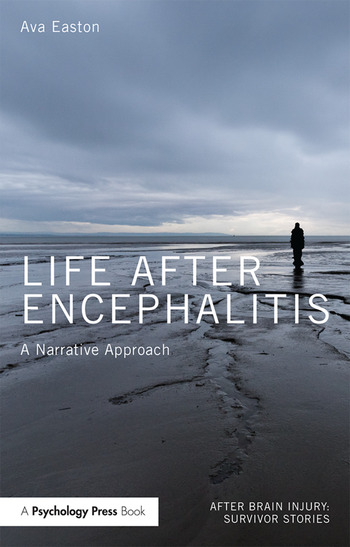Ava Easton has been Chief Executive of the Encephalitis Society since 2011, having worked for the charity since the year 2000. She and her team have made the charity highly visible and successful, with fundraising efforts including initiating World Encephalitis Day (22nd February), and other innovations including neuropsychological support for patients with encephalitis who cannot access services locally. Here she delivers a necessary and timely book on encephalitis for people (not only the patients) affected by viral or autoimmune encephalitis. The book opens with a foreword by the journalist Simon Hattenstone, who describes his own childhood illness and puts it best, “I always thought I was a one-off; unique. Ava Easton makes it clear that there is nothing unique about encephalitis”. This book is among other titles in a series – After Brain Injury: Survivor Stories, edited by Barbara Wilson – that explores in turn: life after encephalitis, survivors’ stories after brain injury, loss of identity, and surviving brain damage after assault.
The book delivers the meaning of what it is to have had encephalitis through the tales of patients and their relatives. There is medical and scientific commentary to fill in some gaps and support the stories, and chapter 2 is a clear stand-alone primer on encephalitis, but this is not a dry textbook. We hear accounts from and chapters devoted each to, and named: ‘the survivors themselves – see Ross’s story, the spouse, the parents and the children’. Though this is a book as part of a series devoted to survivors and surviving brain injury, the book doesn’t shy away from tackling the stories of those who have lost a loved one due to encephalitis in chapter 7, in Johnny’s story. What follows then are a couple of chapters on Ava’s central thesis: the power of the narrative to communicate and affect therapeutic change after an illness such as encephalitis. This is a balanced view and tackles some of the pitfalls, including lost stories, lost memories, consent, bias and potential harms in practice. I read the book while also reading the similarly powerful Refugee Tales (ed David Herd and Anna Pincus, Comma Press, 2016), and, this being the centenary of Constantin von Economo’s description of encephalitis lethargica in 1917, Joel Vilensky’s historical account (OUP 2011), with a chapter on self-reports of people with encephalitis lethargica from the last century.
This is an essential book, not only for those recovering from encephalitis, those relatives or friends or professionals involved in the care of people with encephalitis, neurology wards and clinic areas, but also the general reader interested in knowing more about the impact of sudden acquired brain disease on people through patient narratives.
